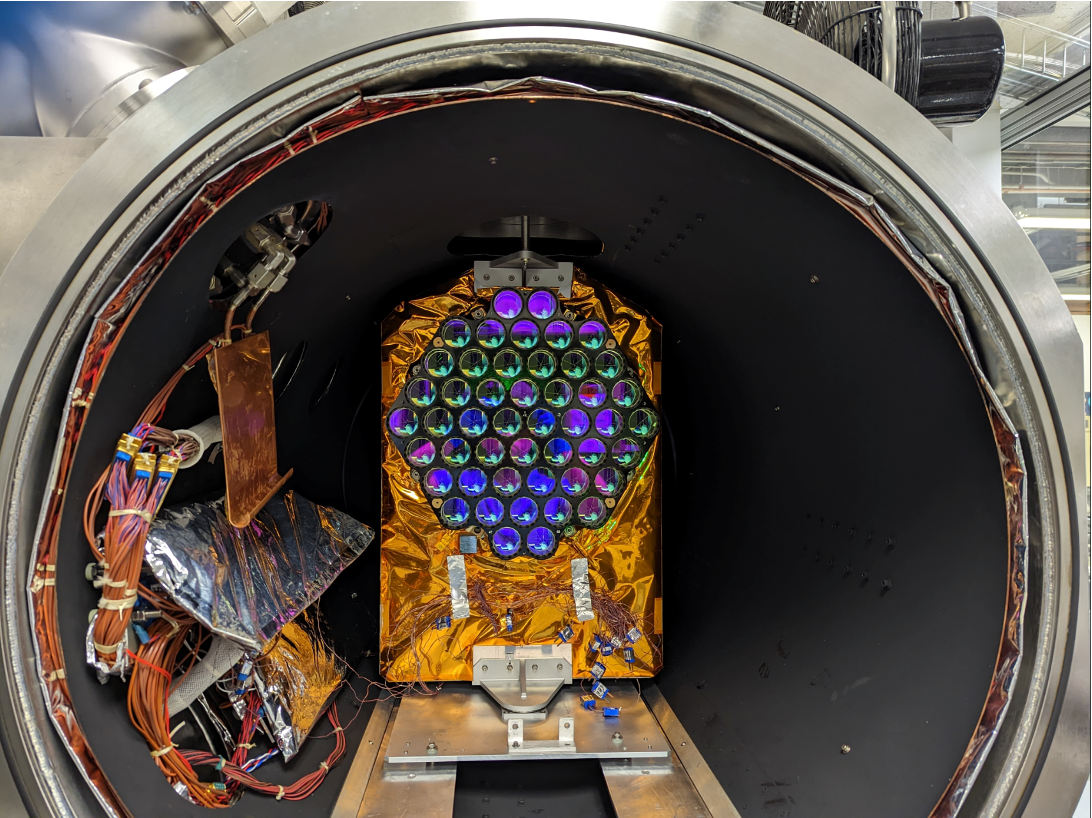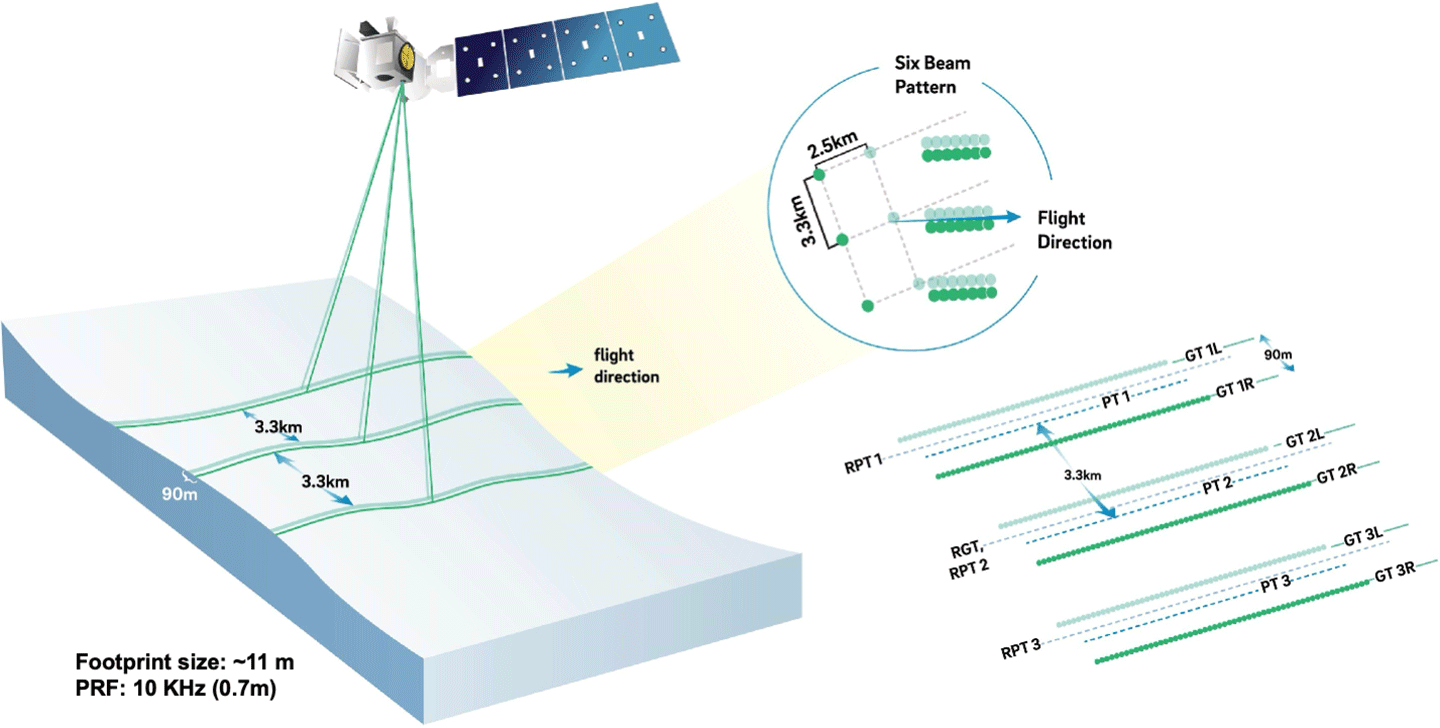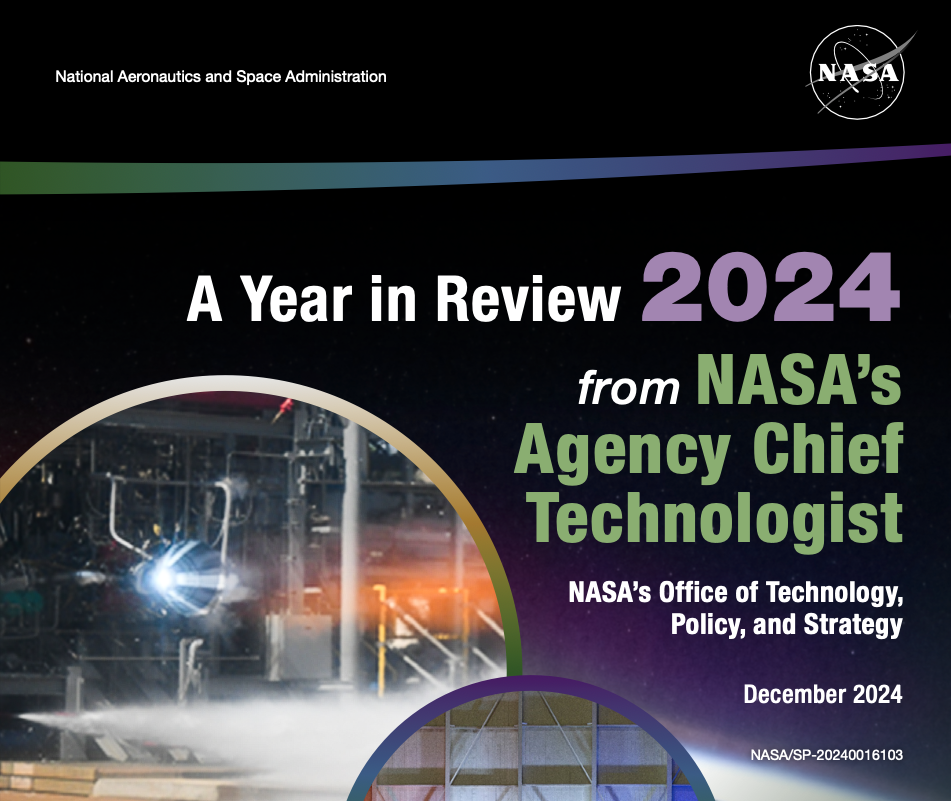NASA Laser Reflecting Instruments to Help Pinpoint Earth Measurements
The best known use of GPS satellites is to help people know their location whether driving a car, navigating a ship or plane, or trekking across remote territory. Another important, but lesser-known, use is to distribute information to other Earth-viewing satellites to help them pinpoint measurements of our planet. NASA and several other federal agencies, […]

5 min read
Preparations for Next Moonwalk Simulations Underway (and Underwater)
The best known use of GPS satellites is to help people know their location whether driving a car, navigating a ship or plane, or trekking across remote territory. Another important, but lesser-known, use is to distribute information to other Earth-viewing satellites to help them pinpoint measurements of our planet.
NASA and several other federal agencies, including the U.S. Space Force, U.S. Space Command, the U.S. Naval Research Laboratory, and the National Geospatial-Intelligence Agency are improving the location accuracy of these measurements down to the millimeter with a new set of laser retroreflector arrays, or LRAs.

“The primary benefit of laser ranging and LRAs is to improve the geolocation of all of our Earth observations,” said Stephen Merkowitz, project manager for NASA’s Space Geodesy Project at NASA’s Goddard Space Flight Center in Greenbelt, Maryland.
A team of scientists and engineers with the project tested these arrays earlier this year to ensure they were up to their task and they could withstand the harsh environment of space. Recently the first set of these new laser retroreflector arrays was shipped to the U.S. Space Force and Lockheed Martin in Littleton, Colorado, to be added to the next generation of GPS satellites.
How do Laser Retroreflector Arrays Work?
Laser retroreflector arrays make it possible to do laser ranging – using small bursts of laser light to detect distances between objects. Pulses of laser light from a ground station are directed toward an orbiting satellite, which then reflect off the array and return to the station. The time it takes for the light to travel from the ground to the satellite and back again can be used to calculate the distance between the satellite and the ground.
Laser ranging and laser retroreflector arrays have been part of space missions for decades, and they are currently mounted on and essential to the operation of Earth-viewing satellites like ICESat-2 (Ice, Cloud, and land Elevation satellite 2), SWOT (Surface Water and Ocean Topography), and GRACE-FO (Gravity Recovery and Climate Experiment Follow On). LRAs for laser ranging were even deployed on the surface of the Moon during the Apollo missions.
“The LRAs are special mirrors,” said Merkowitz. “They’re different from a normal mirror because they bounce back light directly towards its original source.”
For laser ranging, scientists want to direct light beams back to the original source. They do this by placing three mirrors at right angles, essentially forming an inside corner of a cube. The laser retroreflector arrays are made up of an array of 48 of these mirrored corners.
“When light enters the array, due to those 90-degree angles, the light will bounce and take a series of reflections, but the output angle will always come out at the same angle as the one that came in,” said Zach Denny, optical engineer for the Space Geodesy Project at Goddard.

What Will Laser Retroreflector Arrays Help?
Geodesy is the study of Earth’s shape, as well as its gravity and rotation, and how they all change over time. Laser ranging to laser retroreflector arrays is a key technique in this study.
The surface of Earth is constantly changing in small ways due to shifting tectonic plates, melting ice, and other natural phenomena. With these constant shifts – and the fact that Earth is not a perfect sphere – there must be a way to define the measurements on Earth’s surface. Scientists call this a reference frame.
Not only do these arrays and laser ranging help to precisely locate the satellites in orbit, but they also provide accurate positioning information for the ground stations back on Earth. With this information, scientists can even go so far as to find the center of the mass of Earth, which is the origin, or zero point, of the reference frame.
Geodetic measurements – laser ranging to reference satellites like LAGEOS (Laser Geodynamic Satellites) – are used to constantly determine the location of Earth’s center of mass down to a millimeter. These measurements are critical for enabling scientists to assign a longitude and latitude to satellite measurements and put them on a map.
Significant events like tsunamis and earthquakes can cause small changes to the Earth’s center of mass. Scientists need accurate laser ranging measurements to quantify and understand those changes, said Linda Thomas, a research engineer at the U.S. Naval Research Laboratory in Washington.
Satellite measurements of subtle but important Earth phenomena, such as sea level rise, rely on an accurate reference frame. The long-term global trend of sea level rise, as well as its seasonal and regional variations, occur at rates of just a few millimeters a year. The reference frame needs to be more accurate than such changes if scientists want to accurately measure them.
“Geodesy is a fundamental part of our daily lives because it tells us where we are and it tells us how the world is changing,” said Frank Lemoine, project scientist for NASA’s Space Geodesy Project.
By Erica McNamee
NASA’s Goddard Space Flight Center, Greenbelt, Md.
Share
Details
Related Terms
What's Your Reaction?











































